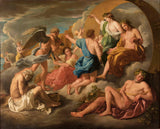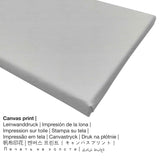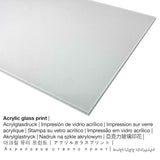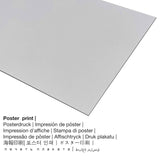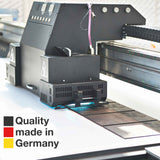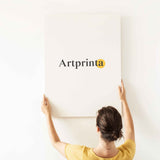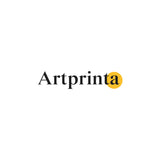Amaghị aha, 1600 - Apollo na-enye ụgbọ ịnyịnya ya na Phaeton - ọmarịcha nka
Ụtụ gụnyere. Mbupu gbakọrọ na ndenye ọpụpụ.
Họrọ ngwa ngwaahịa nke ị họọrọ
In the product dropdown lists you can choose your prefered material and size. We allow you to pick your favorite size and material among the following product individualization options:
- Mbipụta iko acrylic (nke nwere ezigbo mkpuchi iko): An acrylic glass print, which is sometimes named as a UV print on plexiglass, will convert your favorite original artwork into wonderful décor. The acrylic glass protects your custom fine art print against light and heat for many years to come.
- Mbipụta nke aluminom: This is a metal print manufactured on aluminium dibond with an outstanding effect of depth. The colors are luminous in the highest definition, fine details appear crisp, and the print has a a matte look that you can literally feel.
- Akwụkwọ mmado ebipụtara (ihe kwaaji): The poster is a UV printed sheet of cotton canvas with a slightly rough surface structure. A print poster is ideally used for framing the art copy with a custom frame. Please note, that depending on the size of the canvas poster print we add a white margin of around 2-6cm around the artwork to facilitate the framing with a custom frame.
- Kwaaji: A printed canvas material stretched on a wooden stretcher frame. A canvas print has the advantage of being relatively low in weight, which implies that it is easy to hang your Canvas print without any wall-mounts. Because of thata canvas print is suitable for any type of wall.
Disclaimer: We try whatever we can in order to depict our products in as much detail as possible and to display them visually in our shop. However, the colors of the print materials, as well as the imprint may vary somehwat from the presentation on the screen. Depending on your settings of your screen and the condition of the surface, colors may not be printed 100% realistically. Bearing in mind that our art reproductions are processed and printed manually, there may as well be minor variations in the exact position and the size of the motif.
Nkọwa izugbe nke Petit Palais - Musée des Beaux-arts de la Ville de Paris (© - nke Petit Palais dere - Musée des Beaux-arts de la Ville de Paris - www.petitpalais.paris.fr)
Kneeling at the feet of his father, Apollo, Phaethon asked him to lend him his car. This subject, enriched personifications of the four seasons and time, originates from "Metamorphoses" of Ovid. The composition, including Nicolas Poussin's inventor, said nothing of the tragic end that awaits the young Phaethon. We do not know the identity of the author of this painter old copy. The name of Eustache Le Sueur was proposed several times, because of the affection he wore sujet.Il treated him, in fact, on the ceiling of the House of Muses of the Hotel Lambert. However, the invention provides a better understanding of space, a more pronounced depth. He probably looked at the composition of Poussin, but nothing indicates that it has established a copy for study purposes.
This copy of the work of Nicolas Poussin, "Helios and Phaeton with Saturn and the Four Seasons" (Berlin, Gemäldegalerie) was in the Paris collection of Charles Vincent Ocampo, in the early twentieth century. In 1931, Ocampo donated, subject to usufruct, to the City of Paris. He left the usufruct in 1942.
Apollo (Greek mythology); Phaeton (Greek mythology); Dionysus (Greek mythology)
mythological scene, mythology Greco-Roman, Greco-Roman deity, Autumn, Time, Summer, Winter, Spring, Ancient Chariot, Laurel Wreath, Lyre
Nkọwa nke ihe osise ihe karịrị afọ 420
In 1600 the artist Anonymous painted this artpiece Apollo giving his chariot to Phaeton. Ụdị ihe osise ahụ nwere nha ndị a Ogologo: 63,2 cm, obosara: 79,5 cm ma were ihe osise ese Usoro of Mmanụ, Canvas (ihe). N'oge a, artwork gụnyere na art collection nke Petit Palais - Musée des Beaux-arts de la Ville de Paris, nke bụ ihe ngosi nka nka na mpaghara 8th. Obi dị anyị ụtọ ikwu na nke a ngalaba ọha masterpiece is being supplied with courtesy of Petit Palais Paris.The creditline of the artwork is the following: . On top of that, alignment is odida obodo na a akụkụ ruru nke 1.2: 1, nke na-egosi na ogologo bụ 20% ogologo karịa obosara.
Nkọwa gbasara akụkụ nka
| Aha eserese ahụ: | "Apollo giving his chariot to Phaeton" |
| Nhazi nka: | sere |
| Otu izugbe: | nka ochie |
| Narị afọ nka: | 17th narị afọ |
| Ekepụtara: | 1600 |
| Afọ nka: | ihe dị ka afọ 420 |
| Usoro izizi: | Mmanụ, Canvas (ihe) |
| Nha izizi (ọrụ nka): | Ogologo: 63,2 cm, obosara: 79,5 cm |
| Ụlọ ihe ngosi nka / mkpokọta: | Petit Palais - Musée des Beaux-arts de la Ville de Paris |
| Ebe ngosi nka: | Paris, France |
| E Nwere na: | Petit Palais - Musée des Beaux-arts de la Ville de Paris |
| Licensedị ikike: | ngalaba ọha |
| Site n'aka: | Petit Palais Paris |
Nkọwa ngwaahịa
| Bipụta ụdị ngwaahịa: | ezi nka mmeputakwa |
| Usoro mmeghari: | dijitalụ mmeputakwa |
| Usoro mmepụta: | Mbipụta UV ozugbo |
| Mmalite ngwaahịa: | German mere |
| Stockdị ngwaahịa: | a na-achọ |
| Eji ngwaahịa emebere: | imewe ụlọ, ụlọ ihe osise nka |
| Ndepụta: | nhazi odida obodo |
| Njikwa oyiyi: | 1.2: 1 - ( Ogologo: obosara) |
| Nkọwa nke oke akụkụ: | ogologo bụ 20% ogologo karịa obosara |
| Akụrụngwa ị nwere ike ịhọrọ: | acrylic glass print (nwere ezigbo mkpuchi iko), mbipụta akwụkwọ mmado (akwụkwọ kwaaji), mbipụta kanvas, mbipụta ọla (aluminium dibond) |
| Mbipụta kanvas (akwa akwa na etiti ihe ndọtị): | 60x50cm - 24x20", 120x100cm - 47x39", 180x150cm - 71x59" |
| Mbipụta iko acrylic (nke nwere ezigbo mkpuchi iko): | 60x50cm - 24x20", 120x100cm - 47x39" |
| Ụdị akwụkwọ mmado (akwụkwọ kwaaji) dị iche iche: | 60x50cm - 24x20", 120x100cm - 47x39" |
| Nhọrọ nha nke mbipụta aluminom (aluminium dibond material) | 60x50cm - 24x20", 120x100cm - 47x39" |
| Igwe onyonyo: | mmeputakwa na-enweghị isi |
Ozi omenka
| Aha onye nka: | amaonye |
| Ọrụ onye na-ese ihe: | onye na-ese ihe |
| Nhazi nke onye nka: | nna ukwu ochie |
Enwere ikike nwebiisinka ©, www.artprinta.com (Artprinta)

